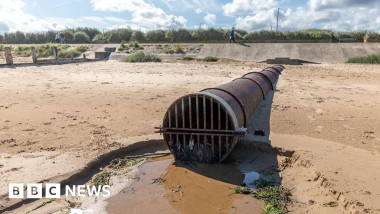BBC uncovers 6,000 possible illegal sewage spills in one year ( www.bbc.com )
Every major English water company has reported data suggesting they’ve discharged raw sewage when the weather is dry – a practice which is potentially illegal.
BBC News has analysed spills data from nine firms, which suggests sewage may have been discharged nearly 6,000 times when it had not been raining in 2022 - including during the country’s record heatwave.
Water companies can release untreated sewage into rivers and seas when it rains to prevent it flooding homes, but such spills are illegal when it’s dry.
The firms say they understand public concerns around dry spilling, but they disagree with the BBC’s findings.
They have said the spill data shared with the Environment Agency was “preliminary” and “unverified”, and also disagree with how the BBC defined a dry spill, which they say differs from the Environment Agency’s approach.
The latest findings follow a BBC investigation conducted last year which found 388 instances of possible dry spilling in 2022 by three water companies - Thames, Wessex and Southern - after they shared their data with the BBC.
The other six – Anglian Water, Northumbrian Water, Severn Trent, South West Water, United Utilities and Yorkshire Water - had refused to share data about when they might be spilling with the BBC. They said it could prejudice an ongoing criminal investigation by the Environment Agency (EA) and Ofwat into their activities.
The regulator – the Environment Agency – which had the data, disagreed, and in January handed it to the BBC.
